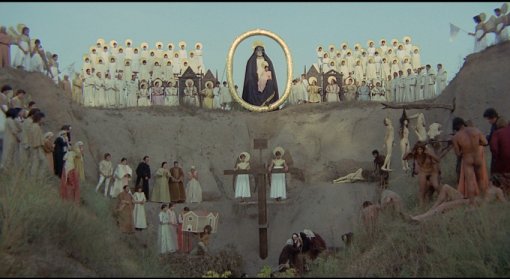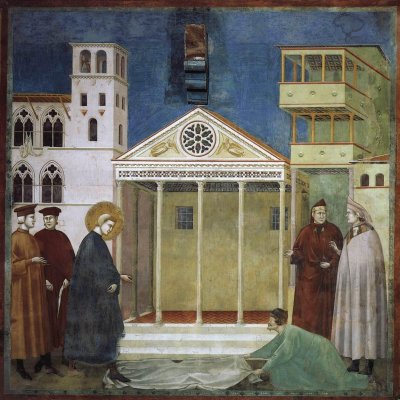Giotto’s Dream
In his “Satyricon,” Fellini contented himself by playing God, the artist, off screen. Pasolini is not quite so modest. About halfway through “The Decameron” he himself shows up as Giotto, one of the founding fathers of the Renaissance. Thereafter we see him periodically, surrounded by his students, at work on a giant fresco, the holy faces of which are those of the thieves, whores, merchants, nuns, friars, rubes, deceived husband and not-so-virginal lovers, whose stories we’ve been watching.
When his work is finally completed, Giotto is spent, drained, empty of feeling. “Why produce a work of art,” he says to himself, “when it’s so nice to dream about it?”
Pasolini’s dream is composed of the tales he tells us, takes as its theme a frenzied Giotto nightmare, in which the artist’s religious visions are overwhelmed by the more attractive visions of a pagan orgy.

Film still from Decameron by Pasolini
Giotto 
Legend of St Francis, Homage of a simple man
Giotto’s Dream an exhibition of paintings and drawings by Jeni Spota. Using Pasolini’s interpretation of Boccaccio’s medieval allegory The Decameron, specifically Giotto’s dream sequence, Spota’s paintings blend traditional religious painting with a hallucinatory vibrancy.
Related links
Pen and Parchment